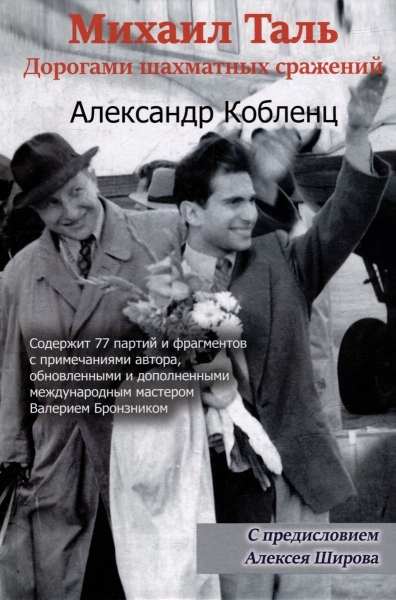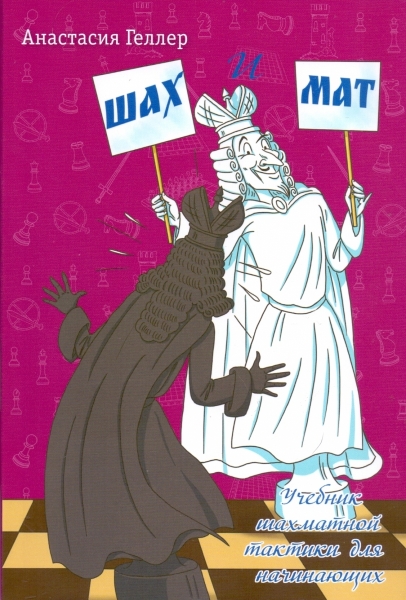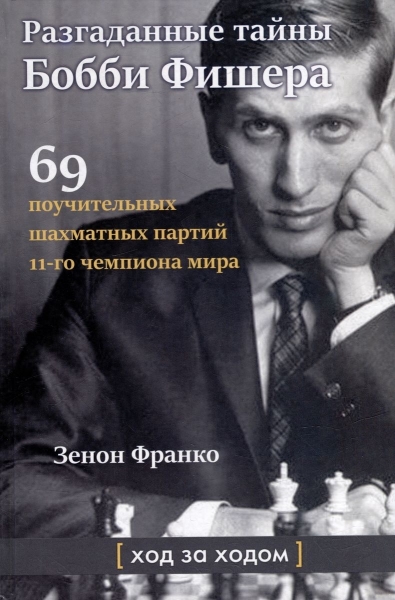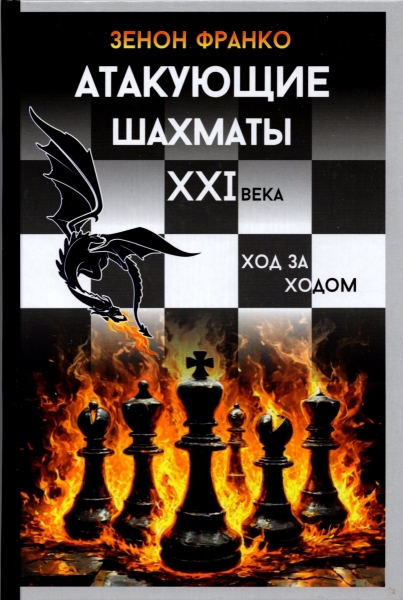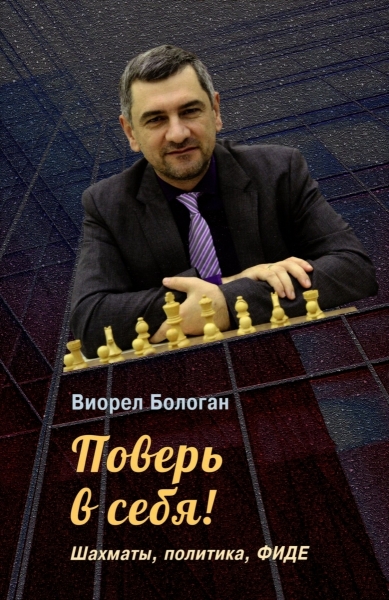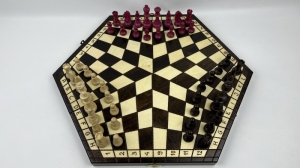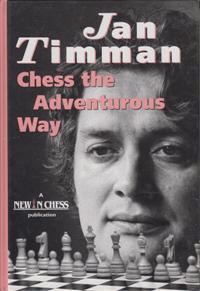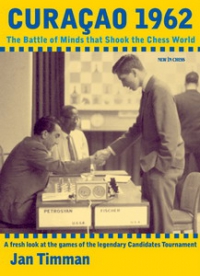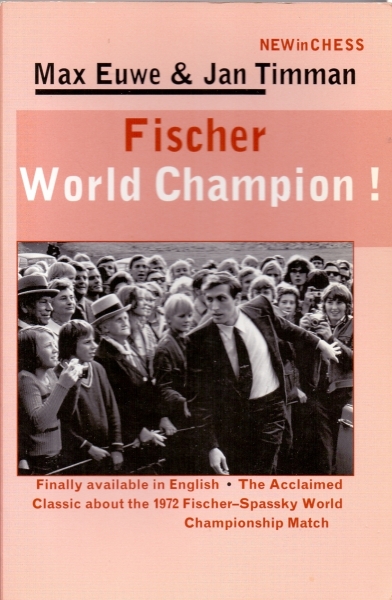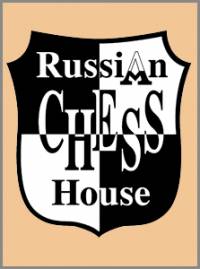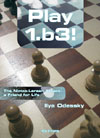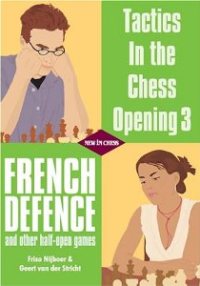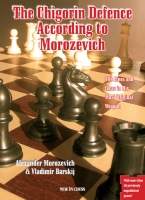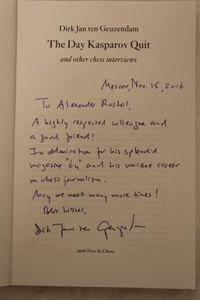New In Chess
Книги издательства:
- Сортировка:
- от дорогих
- от дешевых
- новые поступления
- названия
- автор
-
It is not always the games with the best chess that leave behind the strongest memories. On the contrary, sometimes a break in the logical line of thought in a game results in a maze of chaotic complications and is the ingredient which gives the game its distinctive flavour.
-
The 1962 Candidates’ Tournament in Curaзao was one of the fiercest chess battles of all time. At the height of the Cold War, eight players contested the right to challenge World Champion Mikhail Botvinnik. The format of the tournament was a gruelling quadruple round-robin. Twenty-eight games were to be played on the tropical island, in a contest that lasted two months. The air trembled with drama and intrigue. One of the favourites, the brilliant Mikhail Tal,was taken to hospital after 21 rounds and had to withdraw. Three other players from the Soviet Union, Keres, Petrosian, and Geller, were making suspiciously short draws when playing each other. The two American players came to blows over the services of the second they were supposed to share. Bella Kortchnoi, whose husband took an early lead in the tournament, was a puppet in the hands of the scheming Rona Petrosian, the wife of the later winner. And one of the favourites was a lanky 19-year-old boy from Brooklyn, Bobby Fischer, who openly accused the Soviets of collusion and was later proven right. In the end, Tigran Petrosian was the winner and went on to become the new World Champion the following year. But such was the impact of Fischer’s accusations that this was the last time such a battle was organised. Henceforth the challenger to the highest crown was determined in a series of matches. Curaзao 1962 was the last Candidates’ Tournament. In Curaзao 1962, Jan Timman returns to this clash of giants and takes a fresh look at the games. Timman describes the course of the tournament and annotates the most important games (including 16 of Fischer’s!) in his usual lucid and instructive style. Curaзao 1962 revives a tradition of great tournament books, such as Alekhine’s New York 1927 and Bronstein’s Zurich 1953.
-
5161.68 руб.
Годовой комплект за 2006,2007 годы. Цена указана за один годовой комплект. -
1613.02 руб.
The popularity of the Nimzo-Larsen Attack is largely based on its surprise value, but in fact 1.b3 is one of White’s more logical first moves. By immediately developing his queen’s bishop, White aims at undermining the black centre. Ilya Odessky’s message in this unusual opening book is: opening with 1.b2-b3 is a lot of fun! Odessky will amuse and surprise you, but also teach you all the ins and outs of this offbeat system, which has been used by top players like Bobby Fischer and Bent Larsen. White avoids the many theoretical landmines of mainline openings and steers towards an open battle, right from the start. This system’s basic ideas are strategically sound and easy to learn. But it can also offer wild complications for lovers of tactics. Odessky does not fool you into believing that White is better in all 1.b3 lines. But you will get to know this opening deeply, and you will be better prepared for the struggle than your opponent will be. You will enjoy playing 1.b3!
-
According to an Indian saying, the game of chess is a sea in which a mosquito can drink and an elephant can bathe. To which many chess players would surely like to add: ‘And in which it’s very easy to drown in the middle game!’ In contrast to the opening or the endgame, the middle game seems to offer little in the way of concrete starting-points for methodical study. In Power Chess with Pieces former world championship candidate Jan Timman shows the way through the fascinating maze of the middle game. What, after all, is the point of getting an advantage in the opening if you don’t know how to exploit this advantage? On the basis of countless examples encountered in his rich chess career, Jan Timman deals with themes like ‘strong knight against bishop’ and the ‘dominant bishop pair’. How is one to proceed when one emerges from the opening with a strong knight and one’s opponent is stuck with a bad bishop? And is the bishop pair really as strong as they say? And how can one put this asset to maximum use? Or, conversely, how can one contain the damage if the roles are reversed?
-
1548.51 руб.
TACTICS, TRICKS AND TRAPS! For casual players and club players. Every chess player loves to win early in the game with a deadly combination or a cunning trap. On the other hand, nobody wants to be tricked by his opponent before the game has really started. The chess opening is a minefield. The popular series Tactics in the Chess Opening teaches casual players and club players how to recognize opportunities to attack early in the game. You will also learn how to avoid standard pitfalls in the opening. This book explains, in more than 230 carefully selected and annotated games, all the tactical themes and typical traps of the main lines in: -- the French Defence -- the Caro-Kann -- the Pirc -- the Scandinavian Defence. After studying these brilliant surprise attacks, or just enjoying them, the adventurous chess player will win more games. -
1548.51 руб.
TACTICS, TRICKS AND TRAPS! For casual players and club players. Every chess player loves to win early in the game with a deadly combination or a cunning trap. On the other hand, nobody wants to be tricked by his opponent before the game has really started. The chess opening is a minefield. The popular series Tactics in the Chess Opening teaches casual players and club players how to recognize opportunities to attack early in the game. You will also learn how to avoid standard pitfalls in the opening. This book explains, in more than 230 carefully selected and annotated games, all the tactical themes and typical traps of the main lines in: -- the French Defence -- the Caro-Kann -- the Pirc -- the Scandinavian Defence. After studying these brilliant surprise attacks, or just enjoying them, the adventurous chess player will win more games. -
10046.40 руб.
№ 114:
Forum
In the Forum we have high-class contributions by, among others, Alexey Kuzmin, Viktor Moskalenko, Dejan Antic, Bogdan Lalic and Viacheslav Zakhartsov.Columns
Great stuff from Tata Steel can be found in Joel Benjamin’s Opening Takes and Alexey Kuzmin’s Harvest.Preview
We have a preview of Sergey Kasparov’s latest New In Chess book, called "A Cunning Chess Opening for Black Lure Your Opponent into the Philidor Swamp!"Reviews
Glenn Flear reviews five books: The Liberated Bishop Defence by Alexey Bezgodov, Hannes Langrock’s The French Defense: Rubinstein Variation, Parimarjan Negi’s Grandmaster Repertoire 1.e4 vs. the French, Caro-Kann & Philidor, Evgeny Sveshnikov's Sveshnikov vs. the Anti-Sicilians, and The Modern Tiger by Tiger Hillarp Persson.№ 115:
Forum
The Forum Section has interesting contributions by well-known players like Bogdan Lalic, Luis Rodi and Piotr Wolochowicz, as well as some surprising letters by other readers.Columns
Joel Benjamin has started a NEW COLUMN called Repertoire Building with Benjamin, in which he guides club players in their search for openings that are best suited to their needs.
In Kuzmin’s Harvest, Alexey Kuzmin investigates the opening play of three World Champions at the second Gashimov Memorial: Vladimir Kramnik, Vishy Anand and Magnus Carlsen.Preview
This Yearbook has a preview of an extraordinary new opening book by John Watson and Eric Schiller: 'Taming Wild Chess Openings', which presents a host of uncommon openings in an original way.Reviews
Glenn Flear reviews 'The Art of the King’s Indian' by Gufeld & Stetsko, 'Kotronias on the King’s Indian Vol. 2&3', 'The Modern Vienna Game' by Ovechkin & Soloviov, and two New In Chess Books: Sergey Kasparov’s 'A Cunning Chess Opening for Black' and Zaven Andriasyan’s 'The English Attack against the Taimanov Sicilian'.№ 116
Forum
The Forum Section has interesting contributions by well-known players like Bogdan Lalic and Luis Rodi, as well as some surprising letters by other readers.
Columns
Joel Benjamin continues his new column Repertoire Building with Benjamin with a closer look at some unusual 2.Nf3 Sicilians, suitable for those who want to avoid the overly theoretical main lines.
In Kuzmin’s Harvest, Alexey Kuzmin investigates the opening repertoire of the new Chinese star Wei Yi.Preview
This Yearbook has a preview of The Lazy Man's Sicilian, which is a new version of Valeri Bronznik’s appraised book Sizilianisch für Müssiggänger, updated and expanded by Steve Giddins.Reviews
Glenn Flear reviews Opening Repertoire: The Caro-Kann by Jovanka Houska, Alexey Dreev’s book on the same opening called Attacking the Caro-Kann, and also Parimarjan Negi’s new work Grandmaster Repertoire: 1.e4 vs. the Sicilian 1, and finally Modernized: The Open Sicilian by Zhanibek Amanov & Kostya Kabutskiy.№ 117
Forum
The Forum Section has a highly interesting discussion on the book The Lazy Man’s Sicilian with contributions by Ashot Nadanian and Dvoretsky. Other contributions by, among others, Bogdan Lalic and Viacheslav Zakhartsov.
Columns
Joel Benjamin continues his new column Repertoire Building with Benjamin writing about a consistent and non-labour-intensive approach to Sicilians with 2…Nc6.
In Kuzmin’s Harvest, Alexey Kuzmin takes a look at important opening developments in the World Cup in Baku.Preview
This Yearbook has a preview of the new version of A Chess Opening Repertoire for Blitz and Rapid, written by the well-known grandmaster Evgeny Sveshnikov and his son Vladimir.Reviews
Glenn Flear reviews Junior Tay’s The Old Indian: move by move, Simon Williams’ the killer Dutch, The Lazy Man’s Sicilian by Valeri Bronznik and Steve Giddins, and Boris Avrukh’s new Grandmaster Repertoire installment, no. 1A: 1.d4 – The Catalan. -
-
-
-
1651.73 руб.
NIC Forum Readers from all over the world join in discussions of previous surveys. Both (grand)masters and club players shed their light on new opening developments and search together for the truth. Sosonko&s Corner Genna Sosonko explains the opening according to Alexander Morozevich. Where others try to lure their opponents to unknown territory, Morozevich more often than not joins his opponents! The dream of many an amateur who shies away from voluminous opening monographs and endless Internet sites which produce incessant streams of theoretical material. Book Review Which category do you belong to: do you love white water kayaking or enjoy a gentle boat ride on a placid lake? Three of the four books Glenn Flear has reviewed this time can be described as quiet waters. The fourth one is by Jeroen Bosch, who has revamped his off-beat opening column in New In Chess into a book format. Invigorating material! 34 NIC Surveys Yearbook 69 Sicilian: Najdorf Variation 6.Bg5, by Van der Tak Sicilian: Najdorf Variation 6.Be3, by Lukacs/Hazai Sicilian: Dragon Variation 9.0-0-0, by Cabrera Sicilian: Rauzer Variation 7...Be7, by Karolyi Sicilian: Rauzer Variation 7...a6 , by Cebalo Sicilian: Kalashnikov Variation 6.c4, by Rogozenko Sicilian: Alapin Variation 2...g6, by Gavrilov Pirc: Austrian Attack 5...c5, by Van der Weide King’s Fianchetto: 4.Be3, by Fogarasi French: Advance Variation 6.a3, by Boersma French: Winawer Variation 4...Ne7, by LB Hansen French: Winawer Variation 7.h4, by Pelletier Caro-Kann: Smyslov Variation 4...Nd7, by Dautov Caro-Kann: Classical Variation 4...Bf5, by Olthof Ruy Lopez: Closed Line with 9.d4, by Lukacs/Hazai Two Knights: The Main Line against 5...Ng4, by Panczyk/Ilczuk King’s Gambit: Becker Variation 3...h6, by Pliester King’s Gambit: Declined 2...Bc5, by Van der Tak Queen’s Gambit Declined: Alatortsev Variation 3...Be7, by Langeweg Queen’s Gambit Declined: 5.Qc2, by Van der Sterren Slav: Marshall Gambit 4.e4, by Van der Tak Tarrasch: Rubinstein Variation 6.g3, by Flear Nimzo-Indian: Rubinstein Variation 5.Ne2 Re8, by Bosch Bogo-Indian: Vikoni Variation 4.Bd2 c5, by Dautov Bogo-Indian: 4.Bd2 Qe7, by Anka Queen’s Indian: Nimzowitsch Variation 5.Qb3, by Lukacs/Hazai Grьnfeld Indian: Exchange Variation 7.Bc4 , by Bosch King’s Indian: Classical Main Line 9.Ne1, by Matamoros Benoni: Taimanov Variation 8...Nbd7, by Vaiser Queen’s Pawn: Wagner Gambit 4.e4, by Langeweg Queen’s Pawn: Trompowsky Attack 2...d5, by Gavrilov Dutch: Classical Variation 6...d6, by Flear English: Symmetrical Variation 7.d3 and 8.e4, by Langeweg -
1780.78 руб.
NIC Forum Readers from all over the world join in discussions of previous surveys. Both (grand)masters and club players shed their light on new opening developments and search together for the truth. Sosonko&s Corner The game Smeets-Pavasovic from the Grandmaster C Group of the 2004 CORUS Chess Tournament brought Sosonko back to his childhood days in Leningrad. The teachers at the Pioneer Palace there would never have approved of the moves these young grandmasters were playing: g2-g4 for White and especially Bf8-d6, putting the bishop in front of the queen&s pawn. Sosonko calls it Fidel&s Attack. Read why! Book Review The publication of the third edition of John Watson&s classic "Play the French" and a trilogy on the same opening by Lev Psakhis, whose books are always worth a detour, are an excellent starting point for Glenn Flear to dedicate his review column to. And Sakaev&s Queen&s Gambit Accepted monograph is the ideal finale. According to Flear it is an ideal practical book for those wanting to learn about this opening. Quality comes at a price! 33 NIC Surveys Yearbook 70 Sicilian: Najdorf Variation 6.Bg5, by Van der Tak Sicilian: Najdorf Variation 6.Bg5, by Karolyi Sicilian: Najdorf Variation 6.Bc4, by Golubev Sicilian: Velimirovic Attack 8.Qe2, by Bosch Sicilian: Alapin Variation 2.c3 e6, by Tzermiadianos Pirc: Austrian Attack 4.f4, by Van der Weide King’s Fianchetto: 3.Nf3, by Fogarasi French: Steinitz Variation 4.e5, by Fogarasi French: MacCutcheon Variation 4...Bb4, by Glek French: Winawer Variation 7.Qg4 0-0, by Almasi Caro-Kann: Advance Variation 4.Be3, by Bosch Scandinavian: Gubnitsky-Pytel Variation 3...Qd6, by Karolyi Ruy Lopez: Neo-Steinitz Variation 5...Bg4, by Van der Tak Ruy Lopez: Neo-Arkhangelsk Variation 6...Bc5, by Inarkiev Ruy Lopez: Anti-Marshall Variation 8.h3, by Lukacs/Hazai Italian: Evans Gambit 4.b4, by De Zeeuw Scotch: Steinitz Variation 4....Qh4, by Pliester Two Knights: Traxler Gambit 5.Nf7, by Pastore/Montcaubeig/Da Costa jr English Defence: 1...e6 and 2...b6, by Van der Stricht Budapest Gambit: Fajarowicz Gambit 3...Ne4, by Gutman Queen’s Gambit Declined: Blackburne Variation 5.Bf4, by Ilic Slav: Exchange Variation 6...a6, by Langeweg Slav: Botvinnik Variation 12...Qc7, by Shabalov Queen’s Gambit Accepted: Two Knights Variation 4...c5, by Karolyi Catalan: Open Variation 6...dc4, by Vladimirov Nimzo-Indian: Rubinstein Variation 8...Ba5, by Lukacs/Hazai Nimzo-Indian: Classical Variation 4.Qc2, by Stohl Queen’s Indian: Nimzowitsch Variation 5.Qa4, by Timoshenko King’s Indian: Fianchetto Variation 8.Qd3, by Lukacs/Hazai Dutch: Leningrad Variation 7...Nc6, by Jensen English: Symmetrical Variation 4.e4, by Vilela English: Anti-Grьnfeld Variation 4.Qa4, by Fogarasi Rйti: A White Benoni 8...d4, by Panczyk/Ilczuk -
1780.78 руб.
NIC Forum Readers from all over the world join in discussions of previous surveys. Both (grand)masters and club players shed their light on new opening developments and search together for the truth. With contributions by John Watson, Jacob Aagaard, and many others. Sosonko&s Corner Yasser Seirawan believes 1.e4 is "obviously the most aggressive move", but Evgeny Sveshnikov takes it a step further. He is a man of strong opinions and labels 1.e4 as "the strongest opening move for White beyond any doubt. Sosonko describes in which of three categories (correct, semi-coorect and incorrect) young Garry Kasparov classified all openings after 1.e4 and explains why Sveshnikov stopped playing the Sveshnikov Variation. In reply to a fashionable way to circumvent his latest love (4...e5!) Sveshnikov has developed a new gambit. Read all about it. Book Review The word "repertoire" is widely used, but not always explained. So for that matter is the term "World Champion", but that&s another story. In his column Glenn Flear reviews Khalifman&s two books on the repertoire of Vishy Anand (1.e4) and gives it "thumbs up". He asked a GM-friend to have a look at them and give his opinion. His reaction: "I don&t buy chess books any more, but I&ll make an exception for these two! Plus Konstantin Sakaev&s book on How to Get the Edge Against the Gruenfeld. 33 NIC Surveys Yearbook 71 Sicilian Defence: Najdorf Variation 6.Bg5, by Van der Tak Sicilian Defence: Najdorf Variation 6.Be3 e5, by Lukacs/Hazai Sicilian Defence: Dragon Variation 9.Bc4, by Golubev/Aagaard Sicilian Defence: Dragon Variation 9.Bc4, by Anka Sicilian Defence: Sveshnikov Variation 10...f5, by Nikitin Sicilian Defence: Taimanov Variation 6.Be3, 7.Qd2, by Fogarasi Sicilian Defence: Paulsen Variation 5.Nc3 b5 6.Bd3, by Van der Wiel Pirc Defence: Austrian Attack 4.f4, by Tzermiadianos French Defence: Exchange Variation 4.Nf3 Bd6, by Boersma French Defence: MacCutcheon Variation 4...Bb4, by Glek French Defence: MacCutcheon Variation 4...Bb4, by Cebalo French Defence: Winawer Variation 7.Qg4 0-0, by I.Almasi Caro-Kann Defence: Classical Variation 4...Bf5, by Lukacs/Hazai Caro-Kann Defence: Classical Variation 4...Bf5, by Greenfeld Petroff Defence: Jaenisch Variation 6...Be7, by Karolyi Ruy Lopez: New Arkhangelsk Variation 6...Bc5, by Lukacs/Hazai Italian Game: Two Knights Defence 4.d3, by Tiviakov Philidor Defence: Antoshin Variation 5...Be7, by Fogarasi Albin Counter-Gambit: 5...Nge7, by Raetsky/Chetverik Queen’s Gambit Declined: Exchange Variation 3...Be7, by Boersma Slav Defence: Krause Variation 6.Ne5, by Rogozenko Slav Defence: Meran Variation 6.Qc2, by Karolyi Tarrasch Defence: Rubinstein Variation 6.g3, by Bosch Nimzo-Indian Defence: Rubinstein Variation 4.e3, by Bosch Queen’s Indian Defence: Miles Variation 4.Bf4, by Gavrilov Grьnfeld Indian Defence: Anti-Grьnfeld 4.Bf4, by Rytshagov King’s Indian Defence: Classical Variation 7...Qe8, by Greenfeld King’s Indian Defence: Gligoric Variation 7.Be3, by Van der Weide Volga Gambit: Dlugy Variation 5.f3, by Tay Queen’s Pawn Opening: Trompowsky Variation 2.Bg5 c5, by Nijboer English Opening: Reversed Sicilian 2...c6, by Raetsky/Chetverik English Opening: Symmetrical Variation 4...d5, by Marin Rйti Opening: Markowski Variation 4.Qa4, by Dautov -
1780.78 руб.
NIC Forum Readers from all over the world join in discussions of previous surveys. Both (grand)masters and club players shed their light on new opening developments and search together for the truth. With contributions by Josй Vilela, Bogdan Lalic, and many others. Sosonko&s Corner In several of his previous columns editor-in-chief Genna Sosonko has turned his attention to the move g2-g4, which gets ever more popular in many different opening systems. Now he wants to do the same "One Final Time". Meet the faces of Hein Donner, Alexey Shirov and David Bronstein, all members of the illustrious g2-g4 club. Book Review Reviewing The Jackal Attack, a private publication by Adrian Skelton, Glenn Flear lets his mind roam over the tendency to name off-beat openings after animals. His conclusion about the book: fun variations but skimpy contents. The difference with the other two books under review could not be much bigger. The Two Knights Defence by Jan Pinski and The Catalan by Alex Raetsky and Maxim Chetverik are both serious monographs, be it on totally different openings. The former highly tactical, the latter more with a strategic flavour. 35 NIC Surveys Yearbook 72 Sicilian Defence: Dragon Variation 9.Bc4, by Golubev/Aagaard Sicilian Defence: Dragon Variation 9.Bc4, by Anka Sicilian Defence: Accelerated Dragon 5.c4, by Tiviakov Sicilian Defence: Hyper-Accelerated Dragon 2...g6, by Van der Tak Sicilian Defence: Nimzowitsch Variation 2...Nf6, by Van der Weide Pirc Defence: Austrian Attack 4.f4, by Tzermiadianos French Defence: Advance Variation 3.e5, by Matamoros French Defence: MacCutcheon Variation 4...Bb4, by Glek French Defence: Tarrasch Variation 4...Ne4, by Karolyi Caro-Kann Defence: Classical Variation 4...Bf5, by Da Costa Junior Caro-Kann Defence: Classical Variation 4...Bf5, by Dautov Alekhine Defence: Modern Variation 4...g6, by Panczyk/Ilczuk Ruy Lopez: Exchange Variation 4.Bc6, by Glek Ruy Lopez: Anti-Marshall Variation 8.h3, by Lukacs/Hazai Two Knights Defence: Max Lange Attack 9...g6, by Van der Tak King&s Gambit: Classical Variation 3...g5 , by Jensen Various Openings: Benoni Hybrid Ne7, by Vilela Queen&s Gambit Declined: Tartakower Variation 7...b6, by Langeweg Queen&s Gambit Declined: Exchange Variation 3...Be7, by Boersma Slav Defence: Chameleon Variation 5.c5, by Lukacs/Hazai Slav Defence: Marshall Gambit 4.e4, by Van der Tak Tarrasch Defence: Rubinstein Variation 6.g3, by Wiersma Catalan Opening: Bogo-Indian Variation 4...Bb4, by Greenfeld Nimzo-Indian Defence: Classical Variation 4.Qc2, by Lukacs/Hazai Nimzo-Indian Defence: Vienna Variation 6.Qa4, by Rogozenko Grьnfeld Indian Defence: Exchange Variation 7.Bc4, by Panczyk/Ilczuk Grьnfeld Indian Defence: Exchange Variation 6.Qb3, by Pelletier/Bauer King&s Indian Defence: Classical Variation 7...Qe8, by Greenfeld King&s Indian Defence: Classical Variation 6...Nc6, by Gavrilov Volga Gambit: Declined 4.Nf3, by Fogarasi Dutch Defence: Leningrad Variation 7...Qe8, by Van der Stricht Dutch Defence: Bogoljobow&s 2.Bg5, by Pliester English Opening: Reversed Dragon Nb1-d2, by Stohl English Opening: Symmetrical Variation 5.a3, by Dautov Rйti Opening: Double Fianchetto, by Fogarasi -
1780.78 руб.
NIC Forum Readers from all over the world join in discussions of previous surveys. Both (grand)masters and club players shed their light on new opening developments and search together for the truth. With contributions by Alon Greenfeld, Baadur Jobava, and many others. Sosonko&s Corner This column is an hommage to Oleg Mikhailovich Romanishin. Sacrificing a pawn in the opening to get active play has always been a hallmark of his style. Sosonko depicts the Ukranian genius as one of the leading lights in modern chess research. Of late the results of the 52-year-old Romanishin may have been relatively modest, but this riveting and original grandmaster remains capable of bringing down even the strongest opponent, as Vasily Ivanchuk found out to his detriment at the 2004 Ukrainian championship. Book Review Due to the overflow of information these days, authors of opening books have to make dictinct choices and draw the line somewhere (which variations should be covered, which ignored?) and some of them seem better than others at this fundamental task. Glenn Flear had a look at monographs by Nigel Davies and the Polish duo Panczyk & Ilczuk. Guest-author Sergey Tiviakov reviews three recent publications on the Sicilian Najdorf Variation, revealing on the way that he has not read opening books for a long time. 34 NIC Surveys Yearbook 73 Sicilian Defence: Najdorf Variation, by Boersma Sicilian Defence: Sozin Variation, by Golubev Sicilian Defence: Four Knights Variation, by Karolyi Sicilian Defence: Basman-Sale Variation, by Sale Sicilian Defence: Closed Variation, by Van der Weide Sicilian Defence: Alapin Variation, by Rogozenko Sicilian Defence: Bezgodov Variation, by Bezgodov Pirc Defence: The 150 Attack, by Marin French Defence: Winawer Variation, by Van der Tak Caro-Kann Defence: Advance Variation, by Fogarasi Caro-Kann Defence: Smyslov Variation, by Galkin Caro-Kann Defence: Classical Variation, by Llanos/Soppe Alekhine Defence: Modern Variation, by Panczyk/Ilczuk Ruy Lopez: Jaenisch Variation, by Van der Tak Ruy Lopez: Anti-Marshall Variation, by Lukacs/Hazai Ruy Lopez: Marshall Attack, by Naiditsch Ruy Lopez: Open Variation, by Timoshenko Italian Opening: Evans Gambit, by De Zeeuw Two Knights Defence: Bogoljubow Variation, by Van der Tak Budapest Gambit, by Pliester Slav: 3.Nf3 dc4, by Nikitin Slav: Chameleon Variation, by Lukacs/Hazai Slav: Alapin Variation, by Karolyi Catalan: Bogo-Indian Variation, by Greenfeld Catalan: Accepted – 4...dc4, by Anka Nimzo-Indian Defence: Classical Variation, by Tiviakov Grьnfeld Indian Defence: Fianchetto Variation, by Karolyi Grьnfeld Indian Defence: Exchange Variation, by Pelletier/Bauer King’s Indian Defence: Classical Variation, by Morgado King’s Indian Defence: Anti-Anti-Grьnfeld, by Lukacs/Hazai Benoni: Fianchetto Variation, by Kapengut Volga Gambit Declined, by Fogarasi Dutch Defence: Leningrad Variation, by Van der Stricht English Opening: Anti-Grьnfeld Line, by Marin Related products -
1935.63 руб.
NIC Forum Readers from all over the world join in discussions of previous surveys. Both (grand)masters and club players shed their light on new opening developments and search together for the truth. With contributions by Viktor Kortchnoi, Jose Vilela, Bogdan Lalic, and many others. Sosonko&s Corner Editor Genna Sosonko was leafing through his old notebooks when he came across a venomous novelty he had used in a blitz game against John van der Wiel back in 1987. This provided enough ammunition for an article on the piece sacrifice Nc3-d5 often seen in the English Opening and of course the Sicilian. The final example is by Donner, who once more had his facts wrong. Book Review The ultimate "macho" opening repertoire consists of two openings: the Sicilian Najdorf against 1.e4 and the King&s Indian against everything else. In his previous column the Najdorf came under scrutiny, so it&s somehow appropriate that it&s now the turn of the King&s Indian to receive special attention. Glenn Flear reviews three new KID books by English masters who he has known for longer than he&d care to say: Chris Ward, Joe Gallagher and Andrew Martin. 31 NIC Surveys Yearbook 74 Sicilian Defence: Nameless Variation 5.Bd3, by Fogarasi Sicilian Defence: English Attack, by Stohl Sicilian Defence: Sozin Variation, by Tukmakov Sicilian Defence: Velimirovic Attack, by Van der Weide Sicilian Defence: Sveshnikov Variation, by Morgado Sicilian Defence: Sveshnikov Variation, by Scherbakov Sicilian Defence: Taimanov Variation, by Mortensen Sicilian Defence: Grand Prix Attack, by Scherbakov French Defence: Winawer Variation, by Nikitin Caro-Kann Defence: Pseudo-Panov Attack, by Vilela Caro-Kann Defence: Fantasy Variation, by Gavrilov Scandinavian Defence: Main Line 5...Bg4, by Tiviakov Petroff Defence: Jaenisch Variation, by Tzermiadianos Ruy Lopez: Chigorin Variation, by Marin Ruy Lopez: Open Variation, by Van der Tak Italian Opening: Game Canal Variation, by Jeroen Bosch King&s Gambit: Classical Variation, by Jensen Slav: Krause Variation, by Karolyi Slav: Botvinnik Variation, by Olthof Slav: Semi-Slav Variation, by Ehlvest Catalan: Bogo-Indian Variation, by Lalic Nimzo-Indian Defence: Sдmisch Variation, by Lukacs/Hazai Nimzo-Indian Defence: Vienna Variation, by Scherbakov Nimzo-Indian Defence: Vienna Variation, by Van der Stricht Grьnfeld Indian Defence: Anti-Grьnfeld Variation, by Van der Tak Grьnfeld Indian Defence: Exchange Variation, by Fogarasi King&s Indian Defence: Fianchetto Variation, by Greenfeld Benoni: The Snake, by Anka Benoni: Classical Variation, by Lukacs/Hazai Queen&s Pawn Opening: Trompowsky Attack, by Gavrilov Dutch Defence: Leningrad Variation, by Rogozenko
-
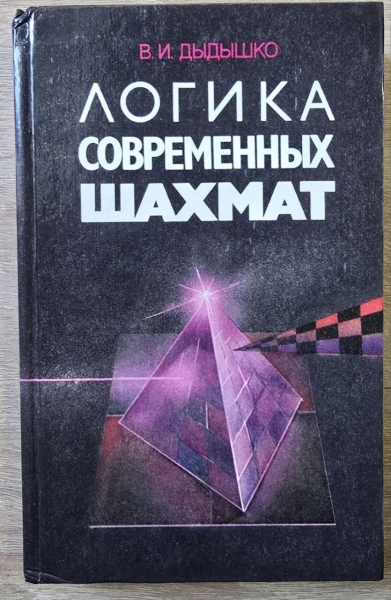 Логика современных шахмат
Автор:
Логика современных шахмат
Автор:
Дыдышко 2900.00 руб. -
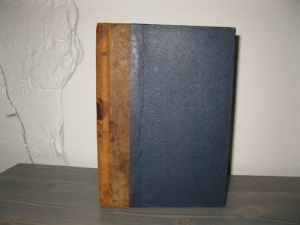 Зигберт Тарраш. Защита ферзевого гамбита: Критические исследования и таблицы. С многочисленными таблицами
Автор:
Зигберт Тарраш. Защита ферзевого гамбита: Критические исследования и таблицы. С многочисленными таблицами
Автор:
Тарраш 2900.00 руб. -
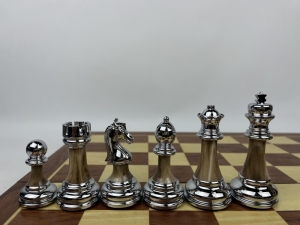 Высококачественные акриловые + металлические тяжелые шахматные фигуры с деревянной доской
8100.00 руб.
Высококачественные акриловые + металлические тяжелые шахматные фигуры с деревянной доской
8100.00 руб.
-
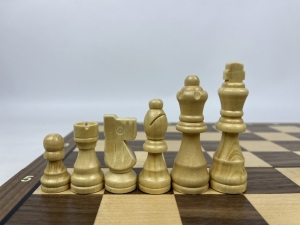 Деревянные магнитные стаунтоновские шахматы с замком (Серебристый)
2250.00 руб.
Деревянные магнитные стаунтоновские шахматы с замком (Серебристый)
2250.00 руб.
-
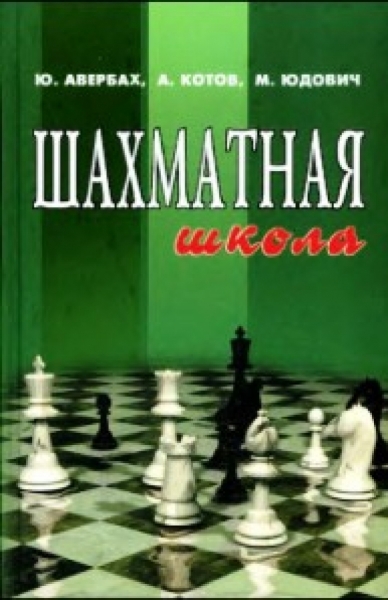 Школа шахмат
Автор:
Школа шахмат
Автор:
Авербах 600.00 руб. -
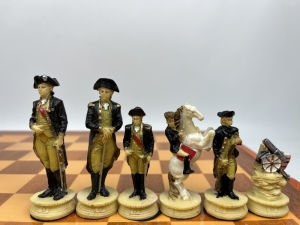 Шахматный набор The Chessmen. Война США - Великобритания
13000.00 руб.
Шахматный набор The Chessmen. Война США - Великобритания
13000.00 руб.
-
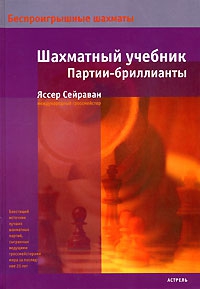 Шахматный учебник. Партии-бриллианты
Автор:
Шахматный учебник. Партии-бриллианты
Автор:
Сейраван 2500.00 руб. -
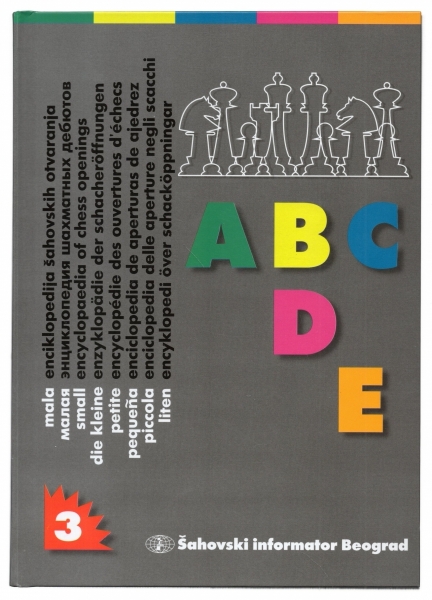 Малая энциклопедия шахматных дебютов. ABCDE (3-е издание)
7000.00 руб.
Малая энциклопедия шахматных дебютов. ABCDE (3-е издание)
7000.00 руб.
-
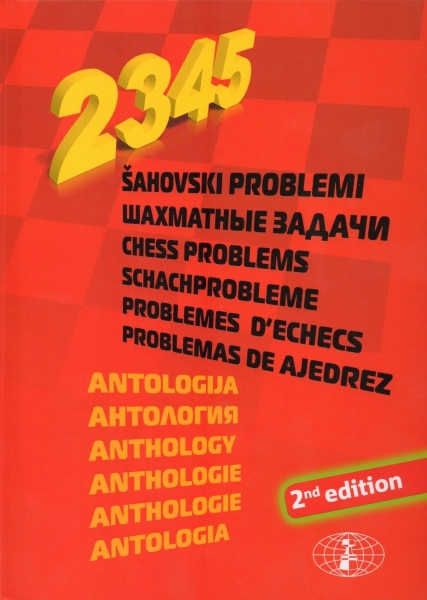 Антология шахматных проблем - 2345
Автор:
Антология шахматных проблем - 2345
Автор:
Ковачевич 4000.00 руб. -
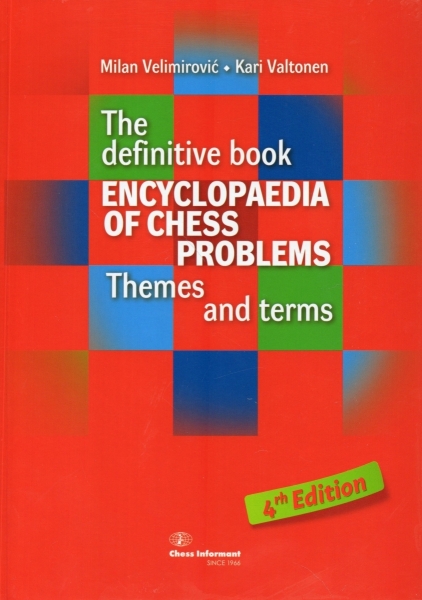 Энциклопедия шахматных проблем - темы и термины. 3-е издание
Автор:
Энциклопедия шахматных проблем - темы и термины. 3-е издание
Автор:
Велимирович 5000.00 руб.
 Русский
Русский  Английский
Английский 
